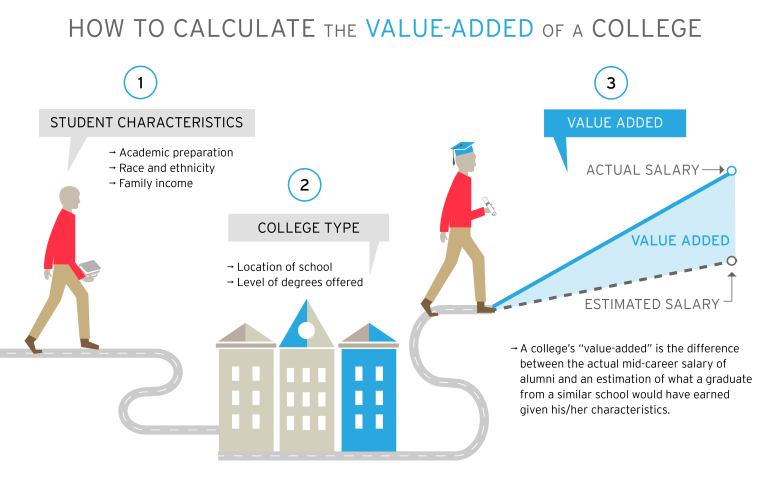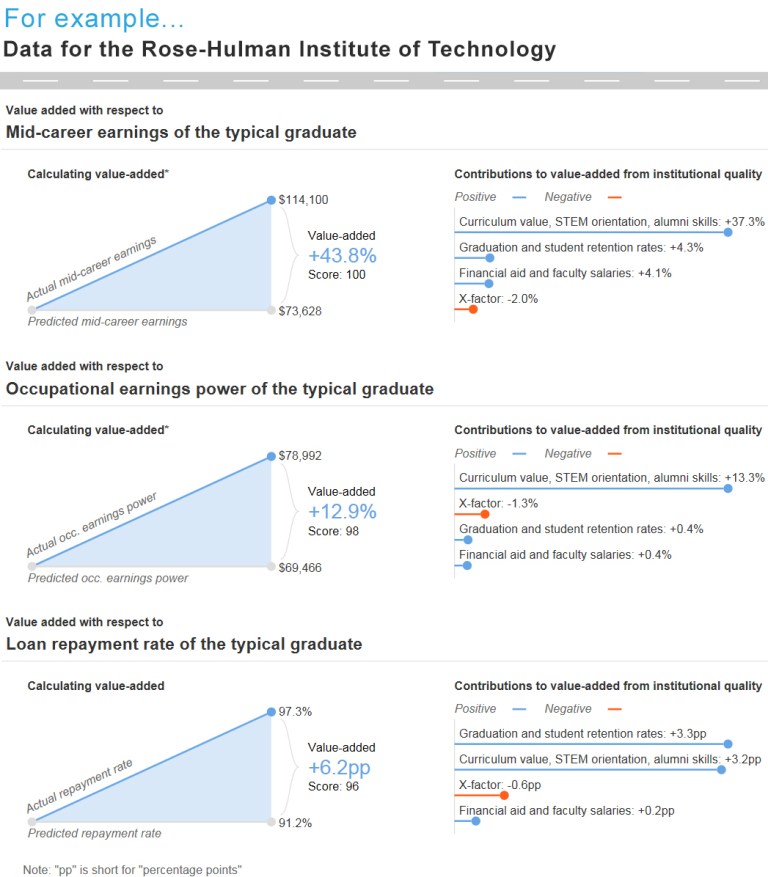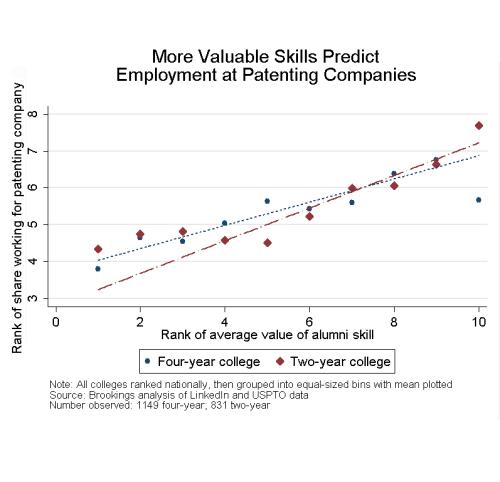Click here for an updated report that includes value-added information for thousands of colleges using the Department of Education’s new College Scorecard database and 2015 Payscale data.
The choice of college is among the most important investment decisions individuals and families make, yet people know little about how institutions of higher learning compare along important dimensions of quality. This is especially true for colleges granting credentials of two years or less, which graduate two out of five postsecondary graduates. Moreover, popular rankings from U.S. News, Forbes, and Money focus only on a small fraction of four-year colleges and tend to reward highly selective institutions over those that may contribute the most to student success.
Drawing on government and private sources, this report analyzes college “value-added,” the difference between actual alumni outcomes (like salaries) and the outcomes one would expect given a student’s characteristics and the type of institution. Value-added captures the benefits that accrue from aspects of college quality we can measure, such as graduation rates and the market value of the skills a college teaches, as well as aspects we can’t.
The value-added measures introduced here improve on conventional rankings in several ways. They are available for a much larger number of schools; they focus on the factors that best predict measurable economic outcomes; and they attempt to isolate the effect colleges themselves have on those outcomes, above and beyond what students’ backgrounds would predict.

Using a variety of private and public data sources, this analysis finds that:
- Colleges with high value-added in terms of alumni earnings include not only nationally recognized universities such as Cal Tech, MIT, and Stanford, but also less well-known schools such as Rose-Hulman in Indiana, Colgate in upstate New York, and Carleton College in Minnesota. Two-year colleges with high-value added scores include the New Hampshire Technical Institute, Lee College near Houston, and Pearl River Community College in Mississippi.
- Five college quality factors seem to be key to how well students perform economically in the years after college:
- Curriculum value: The amount earned by people who hold degrees in a field offered by the college;
- Alumni skills: The average labor market value of skills listed on resumes;
- STEM orientation: The share of graduates prepared to work in STEM occupations;
- Completion rates: The share earning their degrees within four years for a two-year college and eight years for a four-year college;
- Student aid: The average financial support offered by the institution.
- Compared to conventional rankings, these value-added measures more accurately predict alumni economic outcomes for a given student.

The data contained in this report can provide a starting point for investigating a college’s strengths and weaknesses with respect to career preparation. Further due diligence is required by trustees and public officials to assess the direction of the college, its current leadership, its role in the community, and other factors before using these data to guide policy. Likewise, students need to consider likely economic outcomes against the cost of attendance, scholarship opportunities, the availability of degree programs, and other personal factors.
View college data – Download full report
College Value-Added Data Explorer
The Brookings Institution is committed to quality, independence, and impact.
We are supported by a diverse array of funders. In line with our values and policies, each Brookings publication represents the sole views of its author(s).







